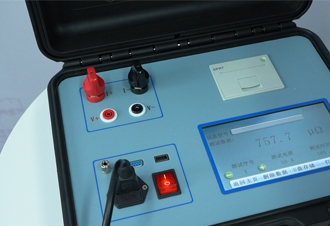 English
English


Understanding Dielectric Resistance Testing Procedures and Importance in Electrical Safety
Understanding the Dielectric Resistance Test Importance, Procedure, and Applications
The dielectric resistance test is a critical evaluation used across various industries to assess the insulation characteristics of materials and electrical devices. This test is particularly crucial in sectors such as power generation, telecommunications, and manufacturing, where insulation plays a vital role in ensuring device performance and safety. Understanding the dielectric resistance test involves exploring its significance, procedure, and applications.
Importance of Dielectric Resistance Testing
Dielectric resistance refers to the ability of an insulating material to resist electrical breakdown. Essentially, it is a measure of how well a material can prevent electric current from leaking through it. As electrical systems operate at high voltages, the integrity of insulation is paramount to avoid failures that could lead to equipment damage, safety hazards, or costly downtime.
The importance of dielectric resistance testing lies in its ability to predict potential insulation failures before they occur. By assessing the condition of insulation, operators can implement preventive maintenance strategies, reduce the risk of catastrophic failures, and extend the lifespan of electrical equipment. Furthermore, dielectric testing is essential for compliance with safety standards and regulations, ensuring that equipment meets the required performance benchmarks before being put into operation.
Procedure of the Dielectric Resistance Test
The dielectric resistance test typically involves the use of an instrument called a megohmmeter, or insulation resistance tester
. Here’s a general outline of the procedure1. Preparation Before testing, the equipment should be de-energized and disconnected from any power source. It is also advisable to remove any connected loads and ensure the area around the equipment is safe for testing.
2. Calibration of Equipment The megohmmeter should be calibrated according to the manufacturer's specifications to ensure accuracy in measurements. Common test voltages are 250V, 500V, or 1000V, depending on the insulation type and voltage rating of the equipment being tested.
3. Conducting the Test Connect the megohmmeter to the equipment terminals, ensuring that the connections are secure. Once connected, initiate the testing process. The instrument applies a specified voltage to the insulation and measures the current leakage. The resistance value is then recorded.
dielectric resistance test

4. Analysis After the test, the results should be analyzed carefully. A high resistance value typically indicates good insulation integrity, while a low value suggests deteriorating insulation. Many industries follow specific guidelines regarding acceptable resistance levels, making it essential to reference these standards when interpreting results.
5. Documentation and Maintenance Finally, all test results should be documented for future reference. This documentation can be valuable for ongoing maintenance and compliance audits. If any issues are detected during testing, necessary corrective actions should be taken immediately.
Applications of Dielectric Resistance Testing
Dielectric resistance testing is widely used across several domains
- Power Plants In power generation facilities, insulation condition is vital for transformers, generators, and switchgear. Regular dielectric testing helps in maintaining the reliability of these systems.
- Telecommunications Equipment used in telecommunications, such as cables and switches, often undergo dielectric testing to ensure they operate efficiently and safely.
- Manufacturing Many manufacturing machinery and processes rely on electrical equipment that requires regular insulation testing to maintain productivity and prevent accidents.
- Renewable Energy With the rise of solar panels and wind turbines, dielectric resistance testing has become essential in evaluating the insulation of these systems, ensuring they can withstand varying environmental conditions.
Conclusion
In summary, the dielectric resistance test is a fundamental procedure that ensures the integrity and reliability of electrical insulation. By regularly conducting these tests, industries can enhance safety, reduce operational costs, and contribute to the longevity of their electrical systems. As technology continues to evolve, so too will the methods and importance of dielectric testing in maintaining efficient and safe electrical operations.
-
Differences between open cup flash point tester and closed cup flash point testerNewsOct.31,2024
-
The Reliable Load Tap ChangerNewsOct.23,2024
-
The Essential Guide to Hipot TestersNewsOct.23,2024
-
The Digital Insulation TesterNewsOct.23,2024
-
The Best Earth Loop Impedance Tester for SaleNewsOct.23,2024
-
Tan Delta Tester--The Essential Tool for Electrical Insulation TestingNewsOct.23,2024





